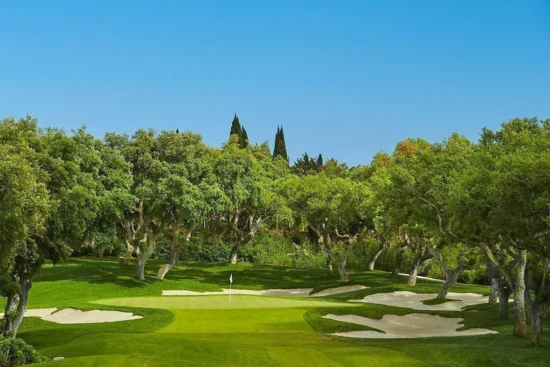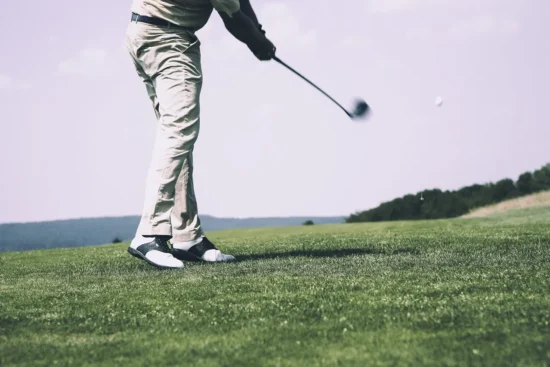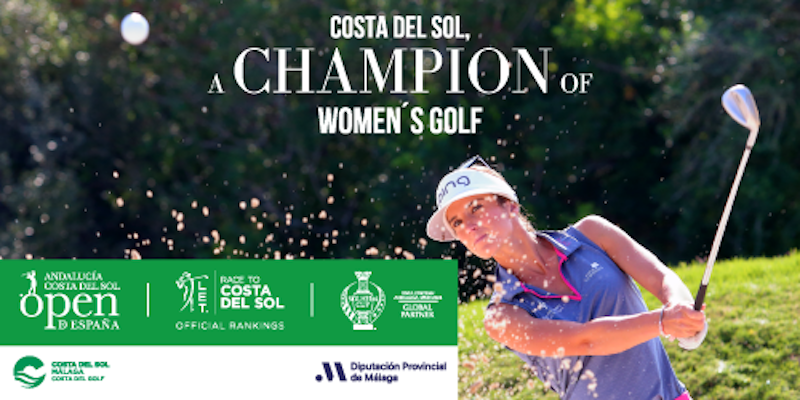
 It all started when the successful businessman Antonio Rubio was offered to buy some plots of land next to an old golf course in the municipality of Mijas. “I came to see them,” he recalls, “and I liked the enclave and the surroundings so much that I told them I would buy the plots and the golf course, which had been closed for a long time. My idea from the beginning was to reopen the course”. That was ten years ago at El Chaparral, one of the most beautiful and peculiar golf courses on the Costa del Sol, thanks to the lush Canary Island pine forest that surrounds it. In some holes, surrounded by such a large grove of trees and very tall specimens, it seems that one is playing golf in a Canadian course. But no, the Mediterranean is only a few hundred meters away, barely three minutes by car. From the terrace of the clubhouse you can see, behind an extensive mass of trees, the sea and in the background, on the clearest days, the African coast.
It all started when the successful businessman Antonio Rubio was offered to buy some plots of land next to an old golf course in the municipality of Mijas. “I came to see them,” he recalls, “and I liked the enclave and the surroundings so much that I told them I would buy the plots and the golf course, which had been closed for a long time. My idea from the beginning was to reopen the course”. That was ten years ago at El Chaparral, one of the most beautiful and peculiar golf courses on the Costa del Sol, thanks to the lush Canary Island pine forest that surrounds it. In some holes, surrounded by such a large grove of trees and very tall specimens, it seems that one is playing golf in a Canadian course. But no, the Mediterranean is only a few hundred meters away, barely three minutes by car. From the terrace of the clubhouse you can see, behind an extensive mass of trees, the sea and in the background, on the clearest days, the African coast.
Rubio’s choice is curious, because he didn’t have the faintest idea about golf. “My sport has always been tennis,” he says. “I had a vision, an intuition, that golf was an interesting investment and I did it because of that and because I loved the place,” he explains.
From the very first moment he did everything possible to get the course reopened, although inconveniences immediately arose: “We had some bureaucratic problems and some old paperwork to sort out, but in the end we got the permits and were able to open the course with success and a lot of expectation.”
To recover the course, practically destroyed due to years of neglect, he hired the prestigious designer of the original layout, José Gancedo, who ‘resurrected’ the corpse and breathed a new and more splendid life into it.
 “Making this course,” says its owner, “is one of my great personal satisfactions, and not only for the golf course itself, but for the staff that works here, from those who are in charge to the last employee, because they are doing an exceptional job of which I feel very proud. And what can I say about Domingo (Gavira, director of the club), he is a great professional”.
“Making this course,” says its owner, “is one of my great personal satisfactions, and not only for the golf course itself, but for the staff that works here, from those who are in charge to the last employee, because they are doing an exceptional job of which I feel very proud. And what can I say about Domingo (Gavira, director of the club), he is a great professional”.
In the ten years since its ‘rebirth’, El Chaparral has invested heavily in improving existing facilities and expanding them with new ones. “When we arrived here the clubhouse was a ruin,” Rubio illustrates, “and it cost a lot of money to completely renovate it.”
The pro-shop and a maintenance building were also built, and this year the machinery has been renewed, with the most modern on the market. In addition, a parking lot has been built next to the clubhouse, and the fleet of buggies will be replaced by a new one, which arrives on October 1. An in-depth refurbishment of the store is scheduled for January, to be carried out by the company Holiday Golf. Work is also being done on the implementation of a new irrigation system.
“They have been very big investments, but the results are evident. The course is in perfect condition; right now it looks incredible,” he says, adding that “for us, Manuel Pantoja (greenkeeper consultant) is the alma mater of this course, I think he is the best in Spain and he is proving it here.”
About the El Chaparral course, Rubio alludes to the comments he receives from those who play it: “When I ask, people tell me: it’s difficult, but so beautiful!















Leave a Reply